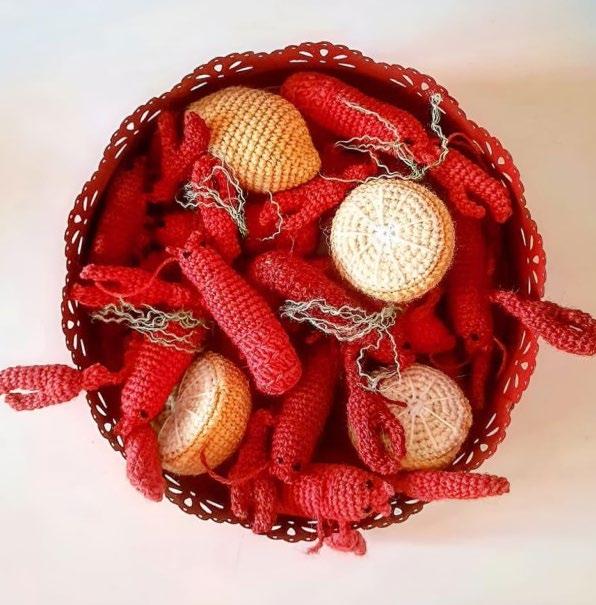
1 minute read
Physical DIGITAL
We’ve spent myriad words describing how the digital realm has punished the physical world. It seemed that artists and artisans alike were destined to put down their tools to favor digital creations. Not the dust covering Michelangelo as he chiseled blocks of marble, as noted by Vasari in his works on the lives of artists, but Da Vinci’s clean garb and refined paintbrushes, as the artist himself insisted on as a form of evolution. Feminine craft seemed all but lost, the domestic arts no longer taught in schools; needle point, hemming, and grass stitch are no more. And yet, the pack of young artists dedicated to knitting and crochet have taken to their needles and thread, or yarn, and rolled up their sleeves to craft neo-realistic pieces. Drawings, paintings, and sculptures give way to masterful embroidery, crochet, or woven works. The painted, illustrated, or photographed images by these artists have captured our attention, and emotions, superseding long explanations.
The “technical” expertise” of this art is restoring a childlike wonder where the world is yet to be discovered, one that tends to wane throughout the years.
Advertisement
Sono stati spesi fiumi di parole sull’avvento del digitale che avrebbe penalizzato il reale. Artisti e artigiani parevano destinati a deporre i ferri del mestiere per dedicarsi a riproduzioni virtuali. Non più polvere di gesso e di marmo, come già si augurava Leonardo da Vinci che, secondo quanto scrive Giorgio Vasari nelle sue Vite, si dedicava alla pittura, preferibilmente con il pennello fine, abbigliato in belle vesti, per non sporcarsi, come accadeva a Michelangelo, sempre imbrattato di polvere di marmo. Le arti femminili si davano per morte, nelle scuole da tempo è stata eliminata l’economia domestica, che prevedeva l’insegnamento del punto quadro, dell’orlo a giorno, del punto a erba. Invece il drappello dei giovani creatori (donne e uomini) che di dedicano alle arti femminili, come il ricamo e il crochet, ingrossa le sue file, annoverando virtuosi dell’ago e del filo, del crochet e dei ferri per lavorare a maglia. Il neorealismo, più che con il disegno, la pittura e la scultura, si esprime in realizzazioni virtuose, ricamate, o lavorate a uncinetto e a maglia. Le immagini dipinte, disegnate e fotografate da questi contemporanei artisti/artigiani catturano le nostre emozioni. Le poche parole che le accompagnano le contestualizzano. L’arte, mediante il virtuosismo esecutivo, cerca di risvegliare quello stupore che appartiene all’infanzia, che deve ancora scoprire il mondo, che si affievolisce con il passare degli anni.









